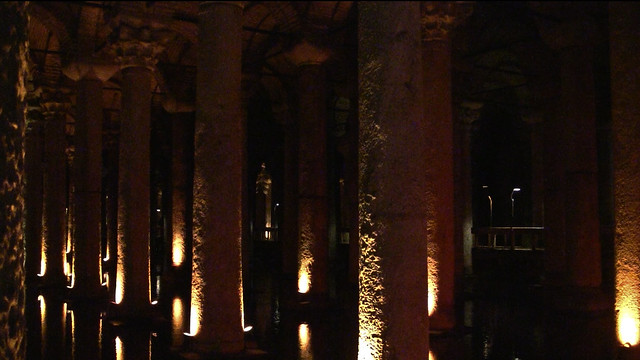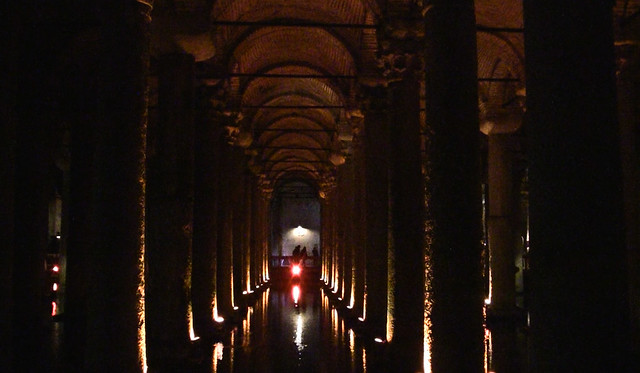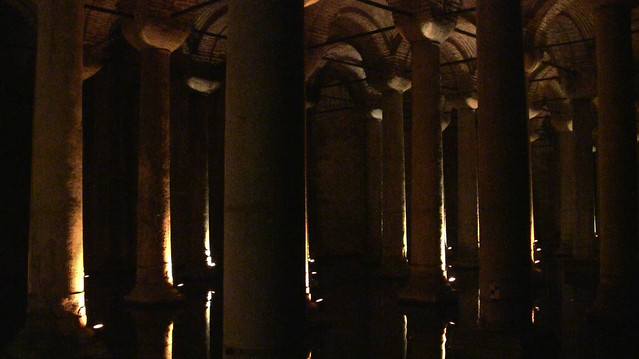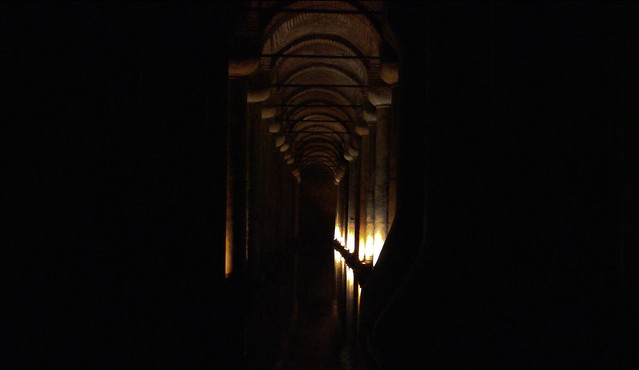The echoing drip-drip-drip-drop of water falling into a shallow pool. Voices, footsteps, and the kur-plunk of a fish randomly disturbing the water’s still surface. This is the bombardment of sounds that greeted my ears as I carefully dodged a low hanging door lintel and stepped down the final steps into the Basilica Cistern.
In preparing for my trip to Istanbul the Basilica Cistern was one of my absolute must-visit destinations. I didn’t know much about it other than that it looked mystical. A large underground “lake” buried deep beneath the streets of one of the world’s most influential and ancient major cities. Cisterns in general have always fascinated me, at least the large ones that can be entered. I anticipated that it would be interesting, but I didn’t know what to expect. I also had no clue how large the cistern was as most of the photos online are taken from one of two vantage points. As a result, while I expected Yerebatan Sarayi to be large, the version of “large” I anticipated was small in comparison to the real deal.
This particular cistern in its entirety is massive. Ancient texts report that 7,000 slaves worked to build the cistern which dates back to the 6th century. That manpower shows as the cistern covers a space of around 105,000 square feet with a roof that is supported by a whopping 336 marble columns. The Basilica Cistern’s designers had a specific purpose in mind during construction, and the cistern fulfills that purpose beautifully with the capacity to store over 100,000 tons of water. To put that into perspective a fully loaded 747 airplane typically weighs about 490 tons. That puts the weight capacity of the cistern at around 204 fully loaded Boeing 747s!!!
The cistern initially drew its water from an aqueduct constructed to connect the cistern with Belgrade Forest some 12 miles away. It was built by the Byzantine Emperor Justinian. Up until 1985 when the cistern was renovated and the raised walkway was added, visitors would tour the cistern by boat, which I can only imagine added to the ambiance of the experience. In its current form the water level is kept relatively low (at about 1-3 feet in depth) and the cistern can be toured by use of a series of raised walkways. While not quite as magical as a wooden row boat, the walkways and current lighting showcase the cistern, its many columns, and its ceiling made out of a system of vaulted arches.
The two Medusa head columns located at the very back of the cistern are some of the Basilica’s oddities. These two large-column bases are beautifully carved and believed to date back to the late Roman period. Beyond that, they are largely a mystery. As an added curiosity, both have been set strangely, with one installed upside down and the other upon its side. Experts theorize that this was done out of superstition as a way to defend against the snake-haired monster’s power. However, more logical theories also suggest they were just used as scrap stone and setup to be as stable as possible with little consideration for the carving that decorated them. Unfortunately, it is very likely that we’ll never know the true reason. One thing is for certain – of all the mythical creatures out there, Medusa is definitely one fell beast and I would hate to run into her in a place like Yerebatan Sarayi!
Quick tip: make sure that you don’t miss the final view of the arches (which also happens to be one of the best). I almost walked right by it as I made my way towards the exit. It is accessed off the final fork on the raised walkways and is located just before you reach the raised stage area and dead end into the small food shop. It winds back in towards the center of the cistern along the back wall and offers a more peaceful view of the columns and vaulted ceilings.
*I apologize for the low quality of the photos in this post. Unfortunately my photos from the cistern were destroyed in a SD card mishap. The shots I’ve used here are stills taken from video footage I shot.



